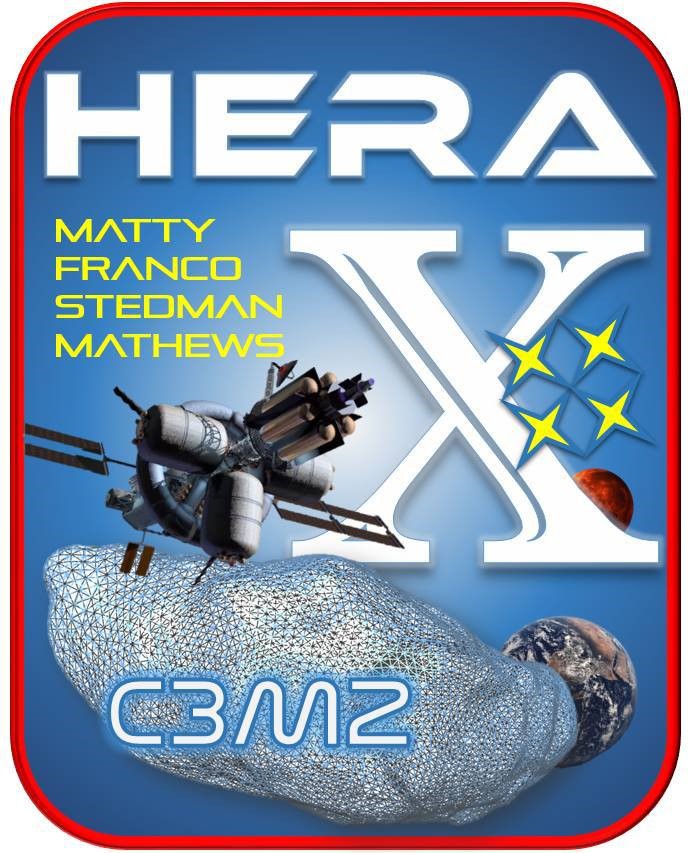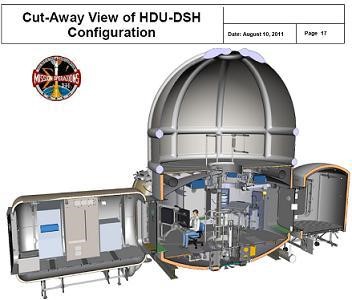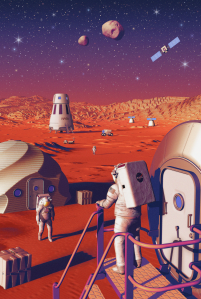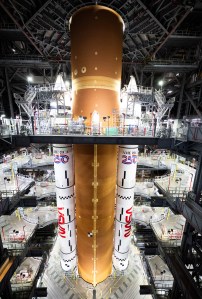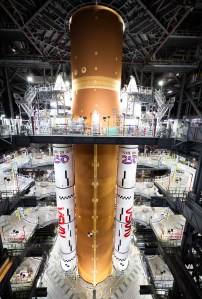One building at JSC houses a spacecraft that will bring its 10th crew face-to-face with an asteroid on May 2. HERA – the Human Exploration Research Analog – is one of several analogs used by the Human Research Program to research ways to help NASA move from Lower Earth Orbit to deep space explorations. An analog is a situation on Earth that produces physical and mental affects on the body similar to those experienced in space. From ingress to splashdown the HERA crew goes through all the motions of a real deep space mission without ever actually leaving the building.
The habitat used for the HERA analog study, located in Building 220, is a three-story research laboratory containing an airlock, medical station, work area, flight deck, four bunks, a kitchen, and a bathroom. It is a generic design not meant to replicate any particular spacecraft.
The HERA X crew is made up of four males selected from the JSC Test Subject Screening (TSS) pool. The four would-be astronauts are Chris Matty of Houston, Ron Franco of Lockport, NY, Casey Stedman of Olympia, Wash, Oscar Mathews of Virginia Beach. Each crew begins training for their mission two weeks before lift-off.
Lisa Spence, the HRP’s Flight Analogs Project Manager, explained that ideally they would like the four-person crews to be two males and two females. Due to the applicant pool, HERA IX was an all female crew, and HERA X is all male. “Our intent is to keep the gender split at 50/50 at least within a campaign,” she said. A campaign is a connected series (4 missions) of operations designed to investigate particular research protocols.
The crew will test hardware prototypes to get “the bugs worked out” before they are used in off-Earth missions. They will conduct experiments involving plants, brine shrimp, and creating a piece of equipment with a 3D printer. After their visit to the asteroid, the crew will simulate the processing of soil and rocks they collected virtually. Researchers outside of the spacecraft will collect data regarding team dynamics, conflict resolution, and the effects of extended isolation and confinement.
“This campaign is different than the others in at least two ways,” Andy Self, Flight Analog Project Operations Lead, said. “First of all it is longer in duration. Campaign One was seven days; Campaign Two was 14 days. The current campaign is 30 days.” The increased time span gives the crew time to conduct more extensive experiments and for researchers to conduct more analogous investigations. “The other change is the mission scenario. In Campaign Two, two crewmembers boarded a space exploration vehicle that detached from the spacecraft and hovered above the surface of the asteroid. For Campaign Three, using the same simulation software and virtual reality goggles, two additional EVA crew members will exit the vehicle and then float above the surface of the asteroid collecting samples.”
How real is a HERA mission? “When we set up an analog research investigation, we try to mimic as many of the spaceflight conditions as we can,” Self said. “Obviously we are not in microgravity so none of the effects of microgravity on the human or on the vehicle can be tested. You can mimic isolation to some degree – although the crew knows they are not really isolated from humanity, the communications delays and ban from social media help them to suspend reality. We mimic confinement and the stress that goes along with it.”
Like real missions, every HERA mission gets its own patch. HERA X will take place during the anniversaries of Gemini X and Apollo X, each of which used a prominent Roman numeral “X” on their patches. The HERA X patch uses a similar “X” in kind along with the names of the crew and symbols of the mission.
_____
NASA’s Human Research Program, or HRP, pursues the best methods and technologies to support safe, productive human space travel. Through science conducted in laboratories, ground-based analogs, and the International Space Station, HRP scrutinizes how spaceflight affects human bodies and behaviors. Such research drives HRP’s quest to innovate ways that keep astronauts healthy and mission-ready as space travel expands to the Moon, Mars, and beyond.

























